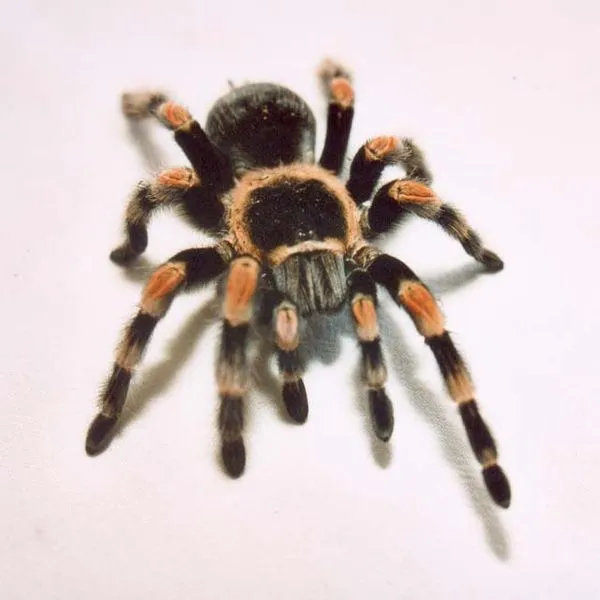Understanding the Red Knee Tarantula
The Red Knee Tarantula ( Brachypelma hamorii), a beloved species in the pet trade, captivates with its striking appearance and relatively docile nature. Originating from the arid scrublands and tropical forests of the Pacific coast of Mexico, this arachnid has become a favorite among tarantula enthusiasts. This comprehensive guide provides 101 amazing tips to ensure your Red Knee Tarantula thrives, covering everything from habitat setup to feeding and health, ensuring a fulfilling experience for both you and your eight-legged friend.
Origin and Habitat
Red Knee Tarantulas are native to the Pacific coast of Mexico, specifically the states of Guerrero and Michoacán. In their natural habitat, they live in burrows they dig in the ground or utilize abandoned rodent burrows. They prefer dry, warm environments with access to shelter. Understanding their natural habitat is crucial for replicating it in captivity, ensuring the tarantula feels secure and comfortable. Mimicking their environment as closely as possible will help them thrive.
Appearance and Characteristics
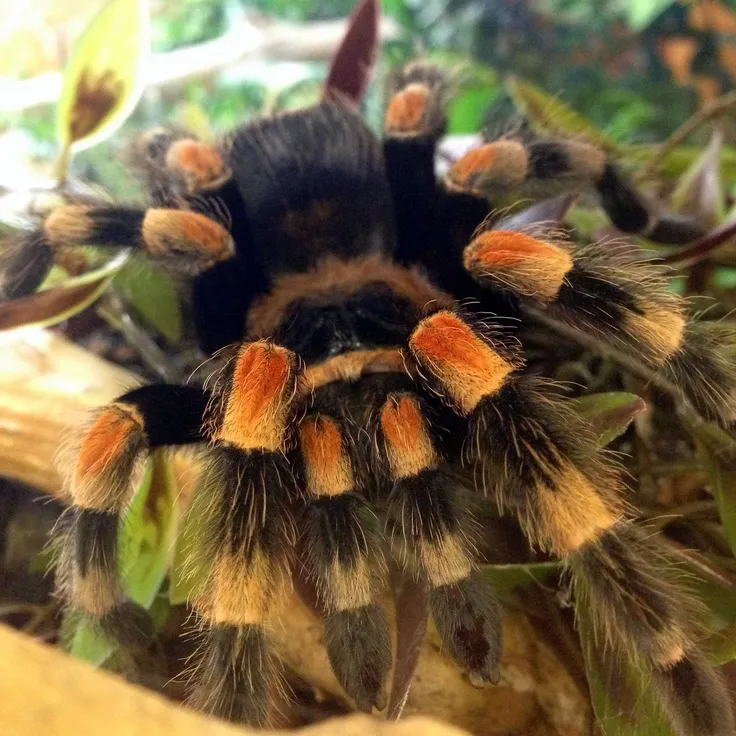
The Red Knee Tarantula is instantly recognizable by its striking appearance. Adults can reach a leg span of up to 6 inches, with females typically larger than males. The most distinctive feature is the vibrant red-orange coloration on the patella (knee) joints of their legs, contrasting beautifully with the black and brown segments of their legs and body. They also have a carapace (the top shell) that can range from tan to brown. These tarantulas are known for their relatively calm temperament, making them popular pets.
Setting Up Your Red Knee Tarantula’s Habitat
Creating a suitable habitat is paramount to the well-being of your Red Knee Tarantula. The enclosure should provide adequate space for movement, shelter, and temperature/humidity regulation. A well-designed habitat mimics their natural environment, reducing stress and promoting a healthy lifestyle. The following sections offer specific advice on choosing the right enclosure, selecting appropriate substrate, and maintaining ideal temperature and humidity levels.
Choosing the Right Enclosure
A glass terrarium or a plastic enclosure is ideal, with dimensions that allow for horizontal and vertical movement. For an adult Red Knee, a 10-20 gallon tank is usually sufficient. Ensure the enclosure has a secure, well-ventilated lid to prevent escape. The enclosure should also provide ample space for substrate, a hide, and a water dish. Avoid enclosures with rough surfaces that might make it difficult for the tarantula to move around or climb.
Substrate Selection
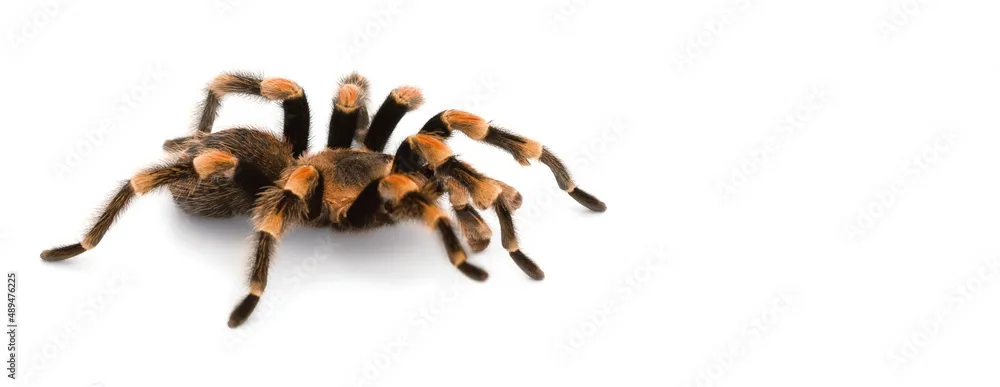
The substrate should be several inches deep to allow the tarantula to burrow if it chooses. A mixture of coconut fiber, peat moss, and a small amount of vermiculite is a great option, providing good moisture retention and allowing for burrowing. Avoid substrates that are dusty or could cause respiratory issues. Regularly spot-clean the substrate to remove any uneaten food or waste, and replace the substrate entirely every few months to maintain hygiene.
Temperature and Humidity Control
Maintain a temperature between 75-85°F (24-29°C) using a heat mat or a low-wattage heat lamp positioned to one side of the enclosure to create a temperature gradient. This allows the tarantula to regulate its body temperature. Humidity should be kept at 60-70%. Regularly misting one side of the enclosure or providing a water dish will help to maintain humidity. Use a hygrometer to monitor humidity levels, and adjust as needed.
Feeding Your Red Knee Tarantula
Proper feeding is essential for the health and growth of your Red Knee Tarantula. A well-nourished tarantula is more likely to molt successfully and live a long, healthy life. Understanding the diet, feeding frequency, and hydration needs is crucial for providing optimal care.
Diet and Nutritional Needs
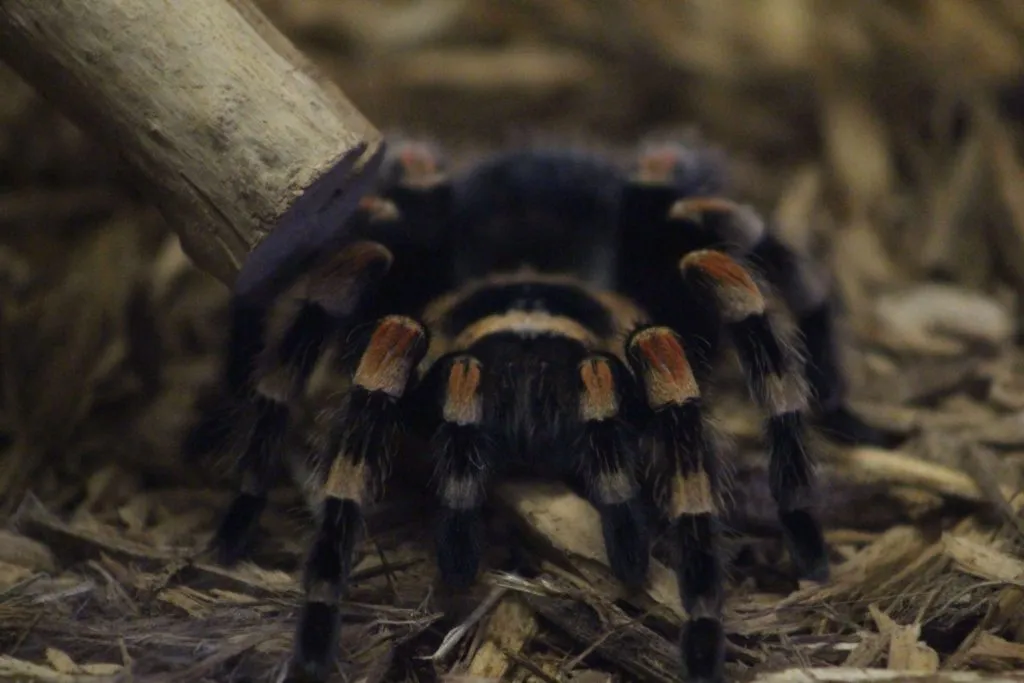
Red Knee Tarantulas are insectivores, so their diet should consist primarily of insects. Crickets, mealworms, dubia roaches, and other commercially available insects are suitable. The size of the prey should be appropriate for the tarantula’s size – avoid feeding insects that are larger than the tarantula’s body. It’s also beneficial to dust the insects with calcium and vitamin supplements to ensure your tarantula receives the necessary nutrients.
Feeding Frequency
Juvenile Red Knee Tarantulas should be fed 2-3 times a week, while adults can be fed once a week or every other week. Adjust the feeding frequency based on the tarantula’s appetite and condition. If the tarantula refuses food, it might be in pre-molt or preparing to molt, and you should avoid feeding it until after the molting process is complete. Always remove uneaten food within 24 hours to prevent mold and mites.
Watering and Hydration
Always provide a shallow water dish with fresh, clean water. The dish should be shallow enough to prevent the tarantula from drowning. Ensure the water dish is always available, particularly during molting periods. You can also mist the enclosure regularly, especially in drier environments, to maintain the appropriate humidity levels.
Handling and Interaction
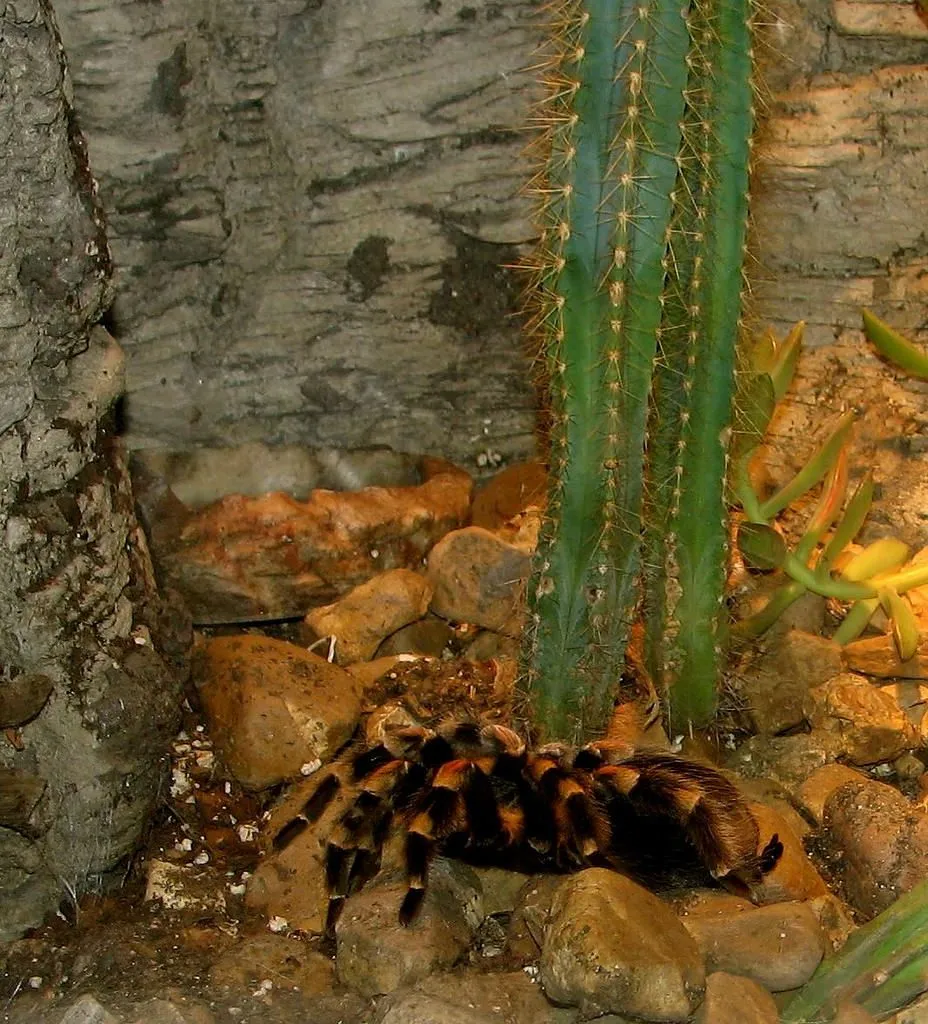
While Red Knee Tarantulas are generally docile, handling should be approached with caution and respect for the animal’s well-being. Overhandling can stress the tarantula, potentially leading to defensive behaviors. Understanding safe handling practices and tarantula behavior will help you interact with your pet in a safe and responsible way.
Safe Handling Practices
If you choose to handle your Red Knee Tarantula, do so close to the ground or a soft surface to minimize the risk of injury if it falls. Gently coax the tarantula onto your hand, avoiding sudden movements. Never handle a tarantula if it is agitated, stressed, or showing defensive behaviors. Always wash your hands before and after handling to prevent the transfer of oils or contaminants.
Understanding Tarantula Behavior
Observe your tarantula’s behavior to understand its mood. A tarantula that is defensive may rear up, flick hairs from its abdomen, or adopt a threat posture. If your tarantula displays these behaviors, it’s best to leave it alone. A healthy, relaxed tarantula will move slowly and deliberately. Regular observation allows you to recognize signs of stress, illness, or impending molting.
Health and Common Issues
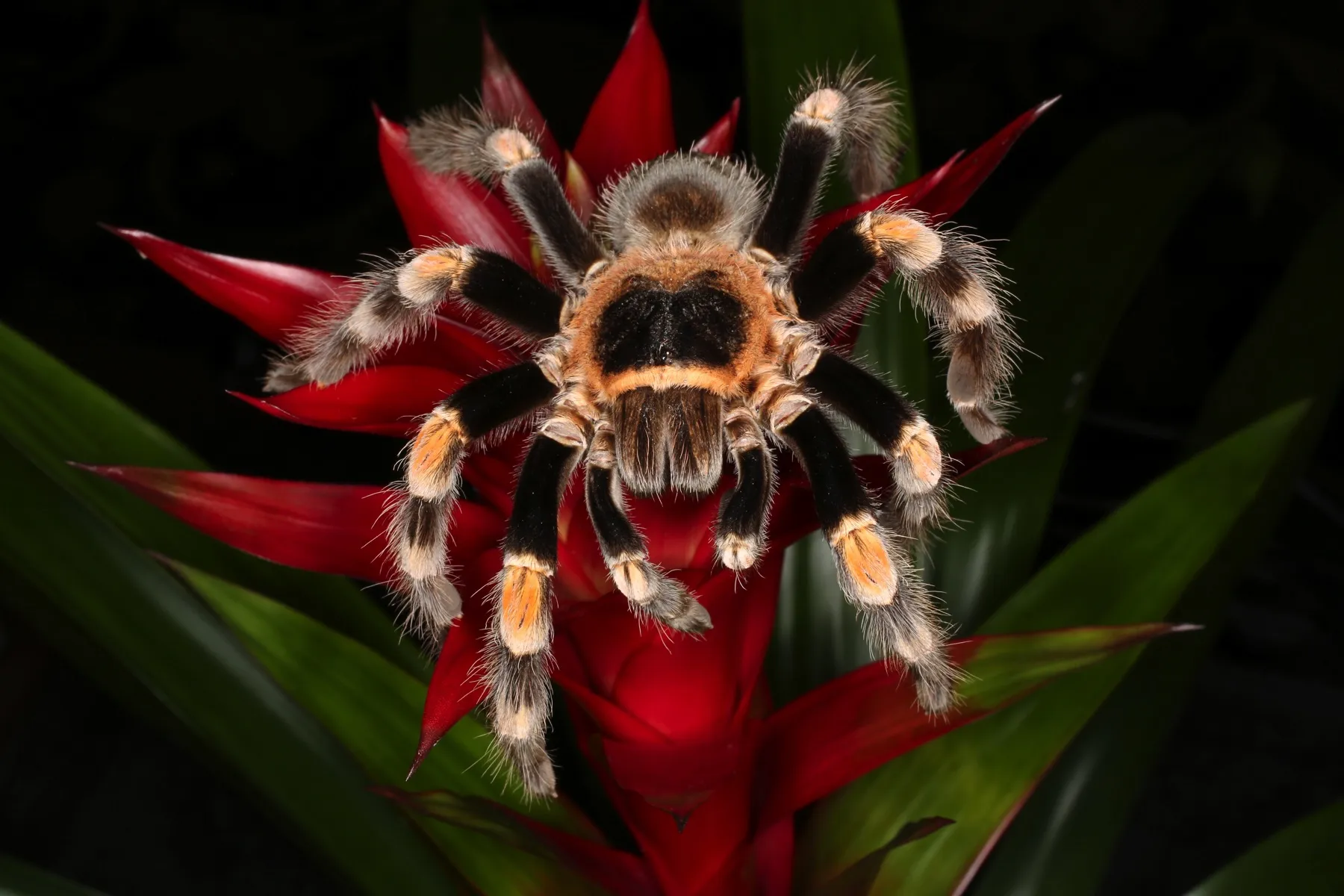
Like all living creatures, Red Knee Tarantulas can experience health problems. Being aware of common issues and knowing how to identify and prevent them is crucial for providing optimal care. Regular observation and preventative measures can help ensure your tarantula lives a long, healthy life.
Identifying and Preventing Health Problems
Watch for signs of illness, such as lethargy, loss of appetite, or unusual behavior. Check for external parasites or infections. Provide proper ventilation and hygiene in the enclosure. Ensure the substrate is clean and regularly maintained. Prevent dehydration by providing a constant supply of fresh water. If you suspect any health issues, consult with a veterinarian experienced in exotic animals or a tarantula expert.
Molting Process
Molting is a natural process where the tarantula sheds its exoskeleton to grow. During this time, the tarantula will often stop eating and may appear sluggish. Provide a humid environment and avoid disturbing the tarantula during the molting process. Do not feed the tarantula until its fangs have hardened and it is actively seeking food after molting. The molting process can take several hours or even days to complete.
Breeding and Reproduction
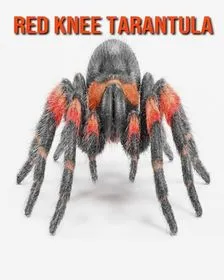
Breeding Red Knee Tarantulas can be a rewarding experience, but it requires careful planning and understanding of the species’ reproductive cycle. The process involves careful pairing, monitoring, and providing optimal conditions for mating and egg development. It is important to do research prior to attempting to breed them.
Mating and Egg Sacs
Mating Red Knee Tarantulas can be tricky. It is important to introduce the male and female in a controlled environment, and always supervise the process. After successful mating, the female will lay an egg sac. The egg sac should be carefully handled to avoid damage. The female will usually guard the egg sac, but removing it can be necessary if the female is not taking care of it.
Raising Spiderlings
Raising spiderlings requires patience and careful management. The spiderlings should be housed individually to prevent cannibalism. Provide small prey items and maintain appropriate temperature and humidity. Regularly monitor the spiderlings’ growth and health. This phase can be very demanding, so proper knowledge is necessary to ensure their survival.
Tips for Long-Term Care
Providing long-term care for your Red Knee Tarantula involves consistent attention to detail and a commitment to maintaining a healthy and stimulating environment. By following these tips, you can ensure your pet enjoys a long and fulfilling life.
Regular Tank Maintenance
Perform regular tank maintenance, including spot cleaning the substrate to remove feces and uneaten food. Replace the substrate entirely every few months to prevent the buildup of bacteria and maintain hygiene. Clean the water dish and decorations regularly. Check and maintain the temperature and humidity levels consistently.
Enrichment and Stimulation
While Red Knee Tarantulas are not very active, you can provide enrichment by adding a hide, branches, or other decorations to the enclosure. This gives the tarantula options and makes the environment more interesting. Vary the feeding times and prey types to simulate a more natural environment. Regular observation helps you understand your tarantula’s behavior and identify any potential needs.
